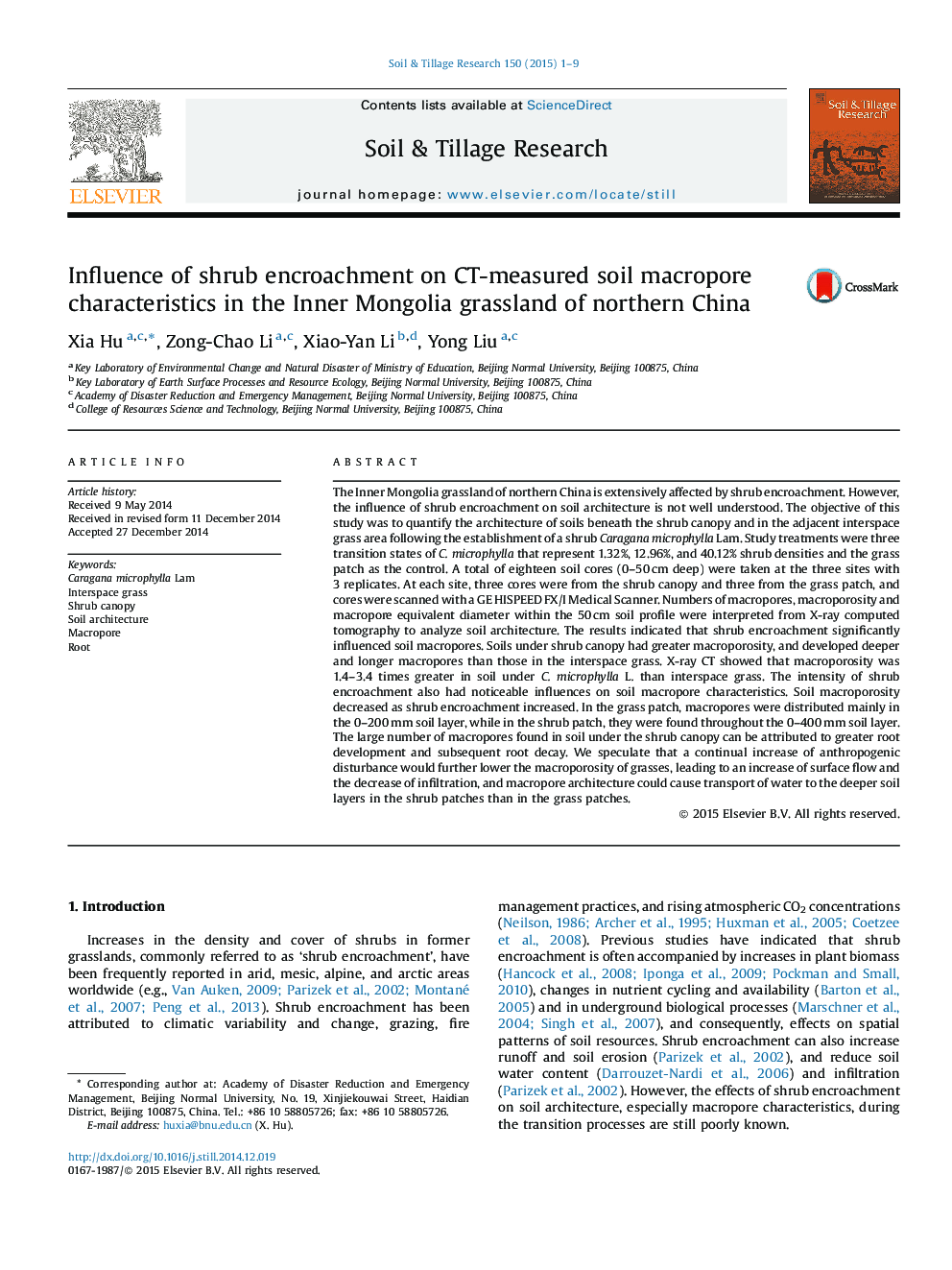| Article ID | Journal | Published Year | Pages | File Type |
|---|---|---|---|---|
| 305561 | Soil and Tillage Research | 2015 | 9 Pages |
•Soils develop deeper macropore under shrub canopy than that in the interspace grass.•Macroporosity was 1.4–3.4 times greater in soil under shrub than interspace grass.•In the shrub patch, macropores were found throughout the 0–400 mm soil layer.•Soil macroporosity decreased as shrub encroachment increased.•Macropores under the shrub canopy can be attributed to greater root development.
The Inner Mongolia grassland of northern China is extensively affected by shrub encroachment. However, the influence of shrub encroachment on soil architecture is not well understood. The objective of this study was to quantify the architecture of soils beneath the shrub canopy and in the adjacent interspace grass area following the establishment of a shrub Caragana microphylla Lam. Study treatments were three transition states of C. microphylla that represent 1.32%, 12.96%, and 40.12% shrub densities and the grass patch as the control. A total of eighteen soil cores (0–50 cm deep) were taken at the three sites with 3 replicates. At each site, three cores were from the shrub canopy and three from the grass patch, and cores were scanned with a GE HISPEED FX/I Medical Scanner. Numbers of macropores, macroporosity and macropore equivalent diameter within the 50 cm soil profile were interpreted from X-ray computed tomography to analyze soil architecture. The results indicated that shrub encroachment significantly influenced soil macropores. Soils under shrub canopy had greater macroporosity, and developed deeper and longer macropores than those in the interspace grass. X-ray CT showed that macroporosity was 1.4–3.4 times greater in soil under C. microphylla L. than interspace grass. The intensity of shrub encroachment also had noticeable influences on soil macropore characteristics. Soil macroporosity decreased as shrub encroachment increased. In the grass patch, macropores were distributed mainly in the 0–200 mm soil layer, while in the shrub patch, they were found throughout the 0–400 mm soil layer. The large number of macropores found in soil under the shrub canopy can be attributed to greater root development and subsequent root decay. We speculate that a continual increase of anthropogenic disturbance would further lower the macroporosity of grasses, leading to an increase of surface flow and the decrease of infiltration, and macropore architecture could cause transport of water to the deeper soil layers in the shrub patches than in the grass patches.
